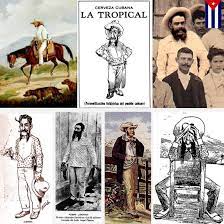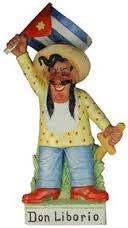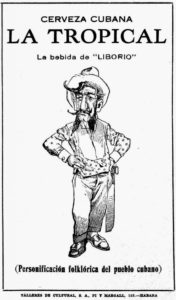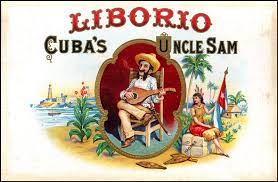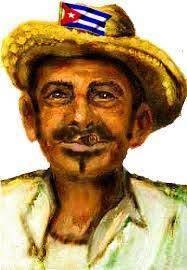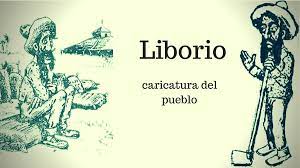“LIBORIO” EN EL IMAGINARIO POPULAR DEL PUEBLO CUBANO. SU ORIGEN. PHOTOS
Para los Cubanos “Liborio”, como ningún otro personaje del imaginario popular representa al pueblo de Cuba. Es para los cubanos lo que es Juan para los españoles, John Bull para los ingleses, Asterix para los franceses o el tío Sam para las norteamericanos.
Liborio representa al legitimo campesino cubano, ataviado con sombrero de yarey, guayabera blanca de hilo, pañuelo rojo al cuello y machete al cinto. El diccionario Larousse lo recoge como “nombre genérico del hombre cubano” que por extensión representa al pueblo cubano.
Liborio esta siempre dispuesto a sacar su machete de la vaina para eslomar (deslomar) a los sinvergüenzas que hacen fortuna en la política y en el gobierno a costa del desdichado guajiro cubano, como dice él con gracia.
ORIGEN DEL PERSONAJE CUBANO LIBORIO
Creado por el caricaturista Ricardo de la Torriente, apareció por primera vez en 1900 en el periódico ‘La Discusión’ que dirigiera Torriente y más tarde y desde 1905 hasta 1931 en en el semanario ‘La Política Cómica’ también dirigido por Torriente.
Algunos otros consideran que el posible origen de Liborio se encuentra en las Aventuras de un mayoral de Juan Jiménez. Este personaje tan querido por los cubanos tiene una larga tradición en el humorismo y la caricatura política, ya que ha personificado y simbolizado a la nación cubana en todos los desafíos que le ha tocado afrontar en su historia.
De alguna forma, y sin la anuencia del Vaticano, Liborio ha sido canonizado por los cubanos y aparece entre los toponímicos de santos en Cuba. No obstante no ha sido posible reconocer por las autoridades eclesiásticas el origen de San Liborio, registrado por Antonio Núñez Jiménez en su obra El Archipiélago, que lo ubica en alguna zona intrincada de la provincia de Camagüey.
Todas las vicisitudes, penas y alegrías del pueblo cubano en esas décadas fueron captadas por Liborio y expresadas a veces en cuartetas otras veces con sólo un gesto de su cara, ya que Liborio era un bromista un tanto satírico.
Esta era la imagen que, representando a Cuba, nunca faltaba en los carnavales, fiestas de disfraces y en los desfiles; no-solo en Cuba antes de Castro, sino en las paradas y fiestas guajiras del exilio, donde con nostálgica vehemencia, aparece de vez en cuando Liborio.
OTRAS REPRENTACIONES DE LIBORIO
Otros, sin embargo, consideran que Liborio no es tan representativo del sentir popular, pues fue utilizado por la sátira política a partir de 1902 con posiciones partidistas muy bien definidas que lo convirtieron en el representante de una parte del pueblo de Cuba, pero no de todo el pueblo de Cuba.
Expresan estos señores que Liborio no es más que una copia al carbón del Guajiro de Landaluce que realizó Ricardo de la Torriente para transmitir su mensaje político y que no pasaba de ser un personaje sumiso y llorón lo que daba muy mala fama a los cubanos.
Sin embargo, este es el Liborio que le gustó a la gente y el que se ganó el sentir popular del pueblo cubano. Prueba de eso es que años después, durante el gobierno de Gerardo Machado, apareció un Liborio sin patillas, valiente y emprendedor pero no le gusto a nadie..Nada, que así de incomprensibles son los cubanos.
Hacia los años cincuenta surgieron otras versiones más modernas de Liborio y hasta surgió Liborito Pérez, versión más ligera y con distinto talante: sin patillas ni bigote, de cara regordeta y sombrero mambí y guayabera criolla. Esta nueva versión de Liborio apareció también en el semanario humorístico Zigzag de Castor Vispo y Roseñada, que en cierta forma fue el continuador, al menos en el estilo humorístico de La Política Cómica.
Hoy, seis décadas después, este personaje en si, como símbolo del pueblo cubano NO ha cambiado. Lo que sí es diferente es su representación, es decir, su imagen y vestimenta. Sigue siendo el mismo hombre sufrido, pegado a la tierra, con sombrero de guano, pero ha perdido su inmaculada guayabera blanca. Viste una camisa raída, unos pantalones desgarrados y anda descalzo. Ya no lleva su machete al cinto, ahora lleva atado a uno de sus pies una gruesa cadena de metal de la que arrastra una pesada bola de hierro, igual al grillete que llevaba nuestro apóstol José Martí” cuando estuvo en prisión a los diecisiete años.
Es irónico, si no fuera desgarradoramente triste. Después de mas de un siglo transcurrido, estamos como Martí, en el punto de partida.
“LIBORIO” IN THE POPULAR IMAGINATION OF THE CUBAN PEOPLE. ORIGEN. PHOTOS.
For Cubans “Liborio”, like no other character in the popular imagination, represents the people of Cuba. He is for the Cubans what Juan is for the Spanish, John Bull for the English, Asterix for the French, or Uncle Sam for the North Americans.
Liborio represents the legitimate Cuban peasant, dressed in a yarey hat, a white string guayabera, a red scarf around his neck, and a machete around his belt. The Larousse dictionary collects it as the “generic name of the Cuban man” that by extension represents the Cuban people.
Liborio is always ready to take his machete out of the sheath to slaughter (slaughter) the scoundrels who make their fortune in politics and in the government at the expense of the unfortunate Cuban peasant, as he says with grace.
ORIGIN OF THE CUBAN CHARACTER LIBORIO
Created by the cartoonist Ricardo de la Torriente, it appeared for the first time in 1900 in the newspaper ‘La Discusión’ directed by Torriente and later and from 1905 to 1931 in the weekly ‘La Política Cómica’ also directed by Torriente.
Some others consider that the possible origin of Liborio is in Juan Jiménez’s Aventuras de un mayoral. This character so beloved by Cubans has a long tradition in humor and political caricature since he has personified and symbolized the Cuban nation in all the challenges that it has had to face in its history.
Somehow, and without the consent of the Vatican, Liborio has been canonized by the Cubans and appears among the names of saints in Cuba. However, it has not been possible to recognize by the ecclesiastical authorities the origin of San Liborio, registered by Antonio Núñez Jiménez in his work The Archipelago, which places it in some intricate area of the province of Camagüey.
All the vicissitudes, sorrows, and joys of the Cuban people in those decades were captured by Liborio and sometimes expressed in quatrains other times with just a gesture of his face since Liborio was a somewhat satirical joker.
This was the image that, representing Cuba, was never lacking in carnivals, costume parties, and parades; not only in Cuba before Castro, but in the Guajiras exile stops and parties, wherewith nostalgic vehemence, Liborio appears from time to time.
OTHER REPRESENTATIONS OF LIBORIO
Others, however, consider that Liborio is not so representative of popular sentiment, as he was used for political satire from 1902 with very well-defined partisan positions that made him the representative of a part of the Cuban people, but not of all the people of Cuba.
These gentlemen express that Liborio is nothing more than a carbon copy of the Guajiro de Landaluce that Ricardo de la Torriente made to transmit his political message and that he was no more than a submissive and crying character, which gave a very bad reputation to the Cubans.
However, this is the Liborio that the people liked and the one that won the popular sentiment of the Cuban people. Proof of this is that years later, during the government of Gerardo Machado, a Liborio without sideburns appeared, brave and enterprising but nobody liked me … Nothing, that is how incomprehensible Cubans are.
Around the fifties, other more modern versions of Liborio emerged and Liborito Pérez even emerged, a lighter version with a different mood: without sideburns or mustache, with a plump face and a mambí hat and Creole guayabera. This new version of Liborio also appeared in the humorous weekly Zigzag by Castor Vispo y Roseñada, which is a certain way was the follower, at least in the humorous style of La Política Cómica.
Today, six decades later, this character himself, as a symbol of the Cuban people, has NOT changed. What is different is the representation of him, that is, his image and clothing. He is still the same long-suffering man, stuck to the ground, with a guano hat, but he has lost his immaculate white guayabera. He wears a ragged shirt, ripped pants and is barefoot. He no longer carries his machete on his belt, now he has a thick metal chain tied to one of his feet, from which he is dragging a heavy iron ball, just like the shackle that our apostle José Martí wore “when he was in prison at the age of seventeen.
He’s ironic if it weren’t heartbreakingly sad. After more than a century elapsed, we are like Martí, at the starting point.
Agencies/ Wiki/ Juan Pérez/ TodoCuba/ Extractos/ Excerpts/ Internet Photos/ Arnoldo Varona/ www.TheCubanHistory.com
THE CUBAN HISTORY, HOLLYWOOD.



